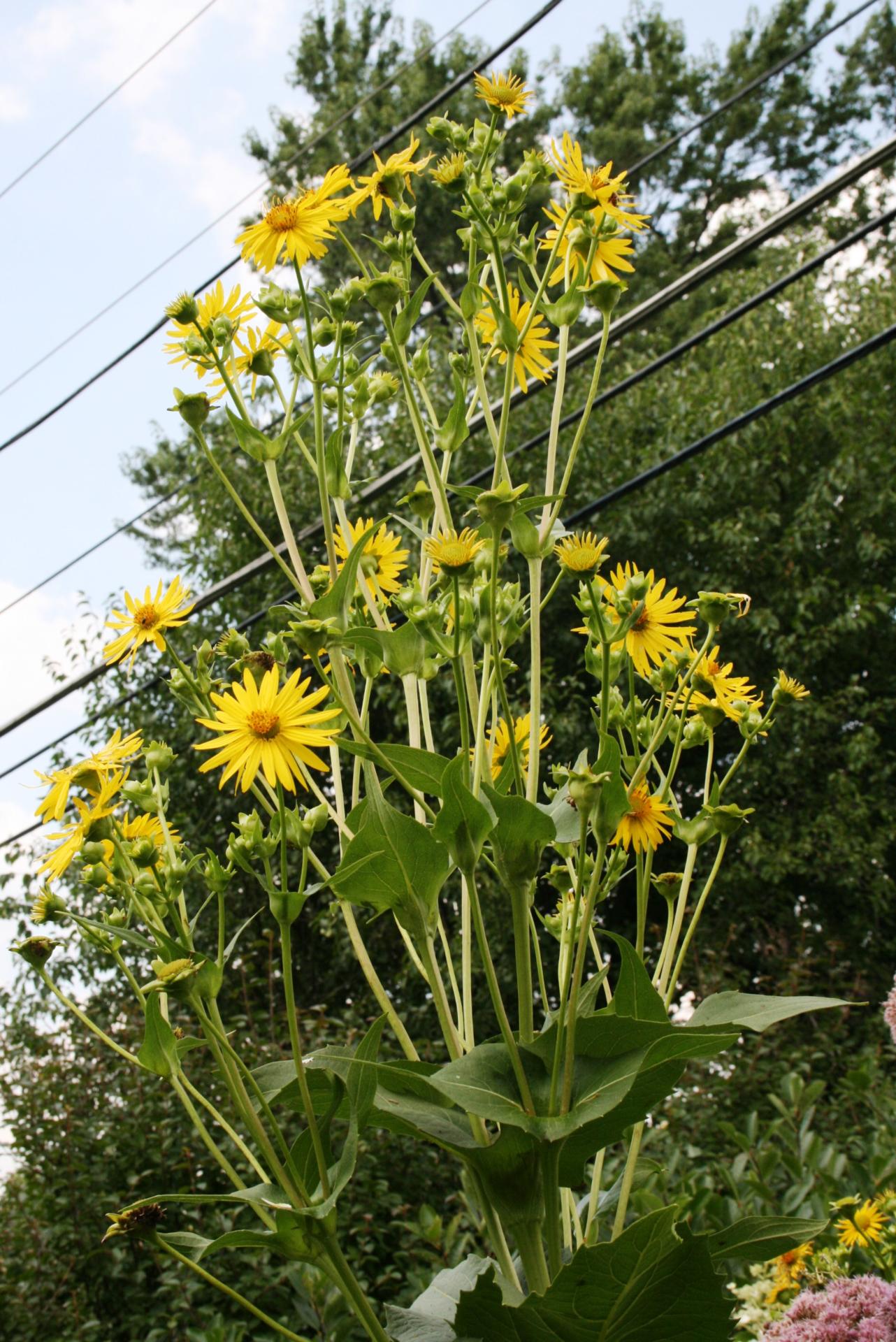by Carol E. Becker
In the upper Midwest, we don’t often think of strictly drought-tolerant gardens, because we have adequate seasonal rain. But that rain comes in the spring and fall, and we typically have hot, dry weather in July and August. Our best strategy for creating gardens that can withstand midsummer drought is to design with native forbs of the central and upper plains.
My north border garden, begun 15 years ago, is a good example of this design strategy. Located on an easement between two suburban properties, it measures 45 feet by 20 feet and was initially full of overgrown honeysuckle, a box elder tree, and a large mulberry tree.
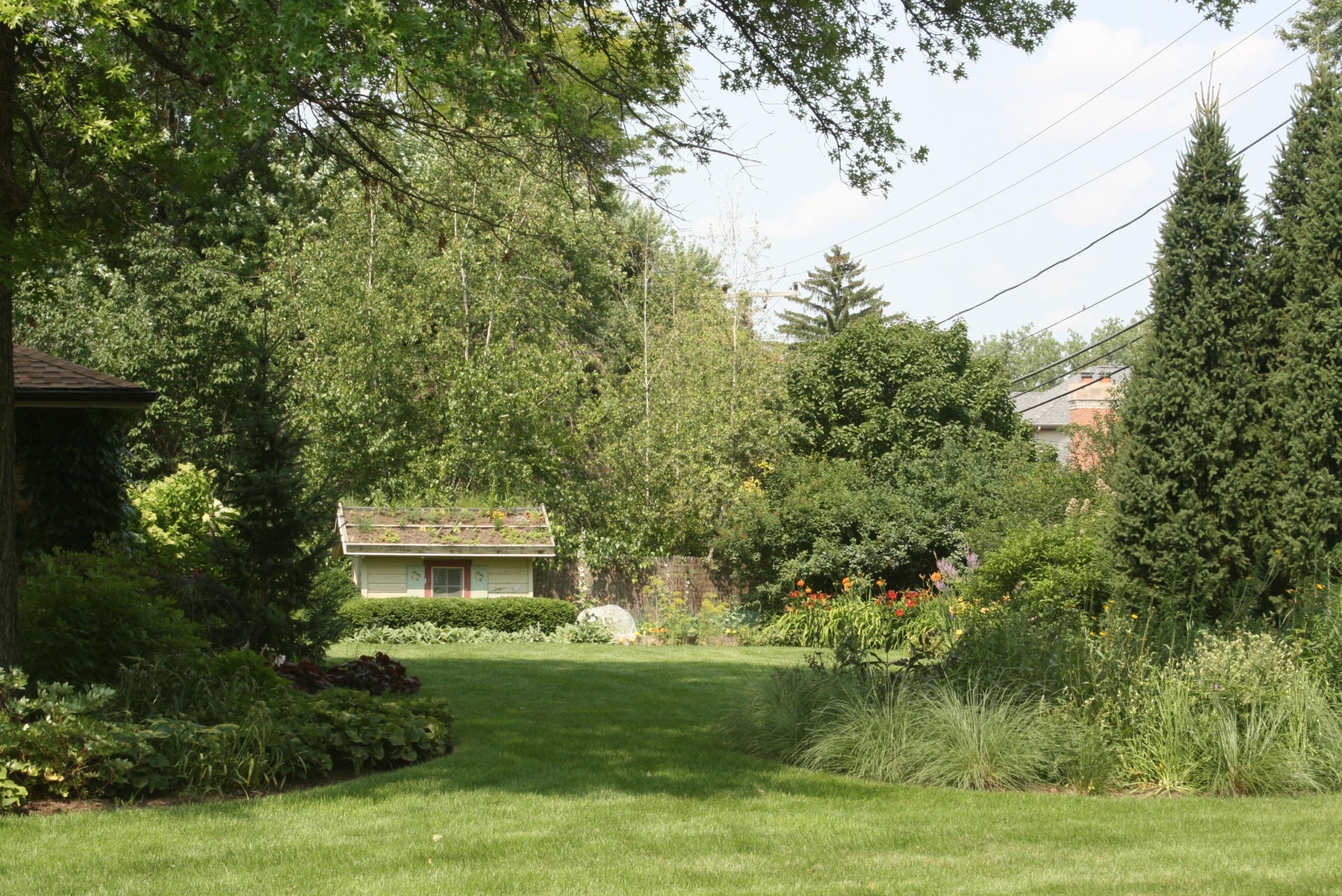
After nearly 15 years, the Picea abies ‘Cupressina’ have matured to provide form and structure at the front end of the easement garden (on the right in this photo of our large side yard) and screen native forbs behind them that are allowed to remain all winter.
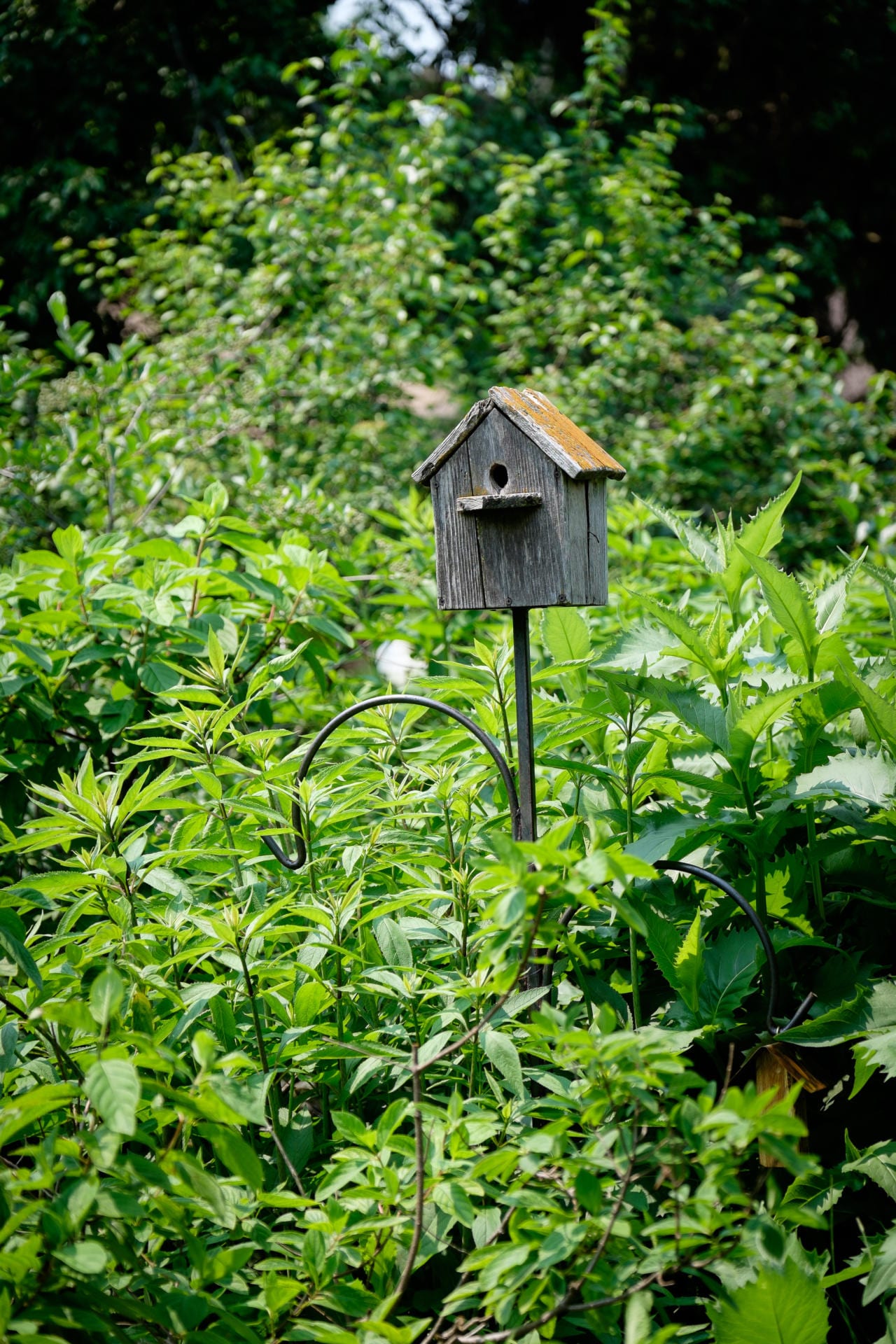
The bird house set in the midst of Eupatorium perfoliatum and Silphium perfoliatum is used every season. In the background, Viburnum burkwoodii rises above the tall forbs.
The re-design started with evergreens (not native to Illinois) to screen a large utility pole, provide winter interest and balance the large expanse that would be deciduous shrubs and forbs. I chose Picea abies ‘Cupressina’ for its fast growth rate and narrow habit. The balance of the garden’s skeleton includes Illinois native shrubs Cornus sericea, Aronia melanocarpa, Viburnum burkwoodii, and non-native Hydrangea paniculata ‘Tardiva’. Within this framework, I have been able to build a garden with a wide variety of native plants that provide constantly changing color and texture throughout the season.
Because the area is so big and the shrubs have a mature size of up to 15 feet, I have been able to use prairie native plants that are often too big for a residential garden. The centerpiece of the garden is therefore Silphium perfoliatum.
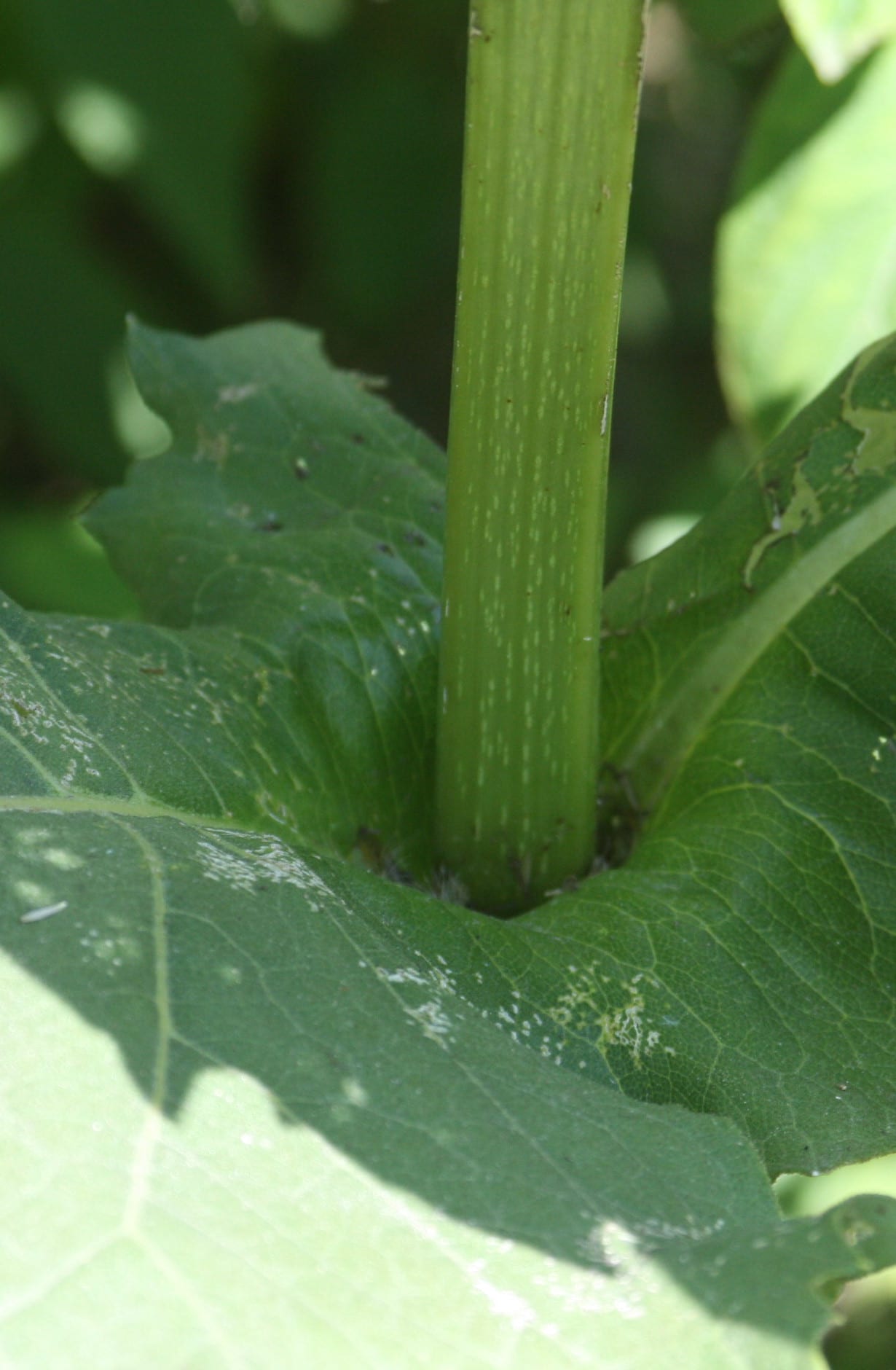
The “cup” of Silphium perfoliatum gives this native forb its common name, cup plant. Note the rough texture and large size of this plant, features that most residential gardeners do not like. However, it is really popular with the birds, who flock here to drink after a rain.
S. perfoliatum is not a favorite with many designers, even those who are devoted to native forbs. It is large, coarse, and somewhat invasive in its spreading habit if not controlled. I happen to love it for its unabashed vigor and its size, and my husband and neighbors are amazed each season that it fills a huge space in the garden, provides cover for the birds and insects, and sports delightful yellow blossoms in mid-summer. I do control its spread by removing wandering sprouts each spring, and when kept in its place, it is a show stopper.
Around and among the shrubs and the cluster of S. perfoliatum, tall grasses and vigorous sun-loving forbs are at home. The garden space is now lush with Baptista australis, Rudbeckis hirta, Eupatorium perfoliatum, Zizia aurea, Echinacea purpurea, and several varieties of Miscanthus.
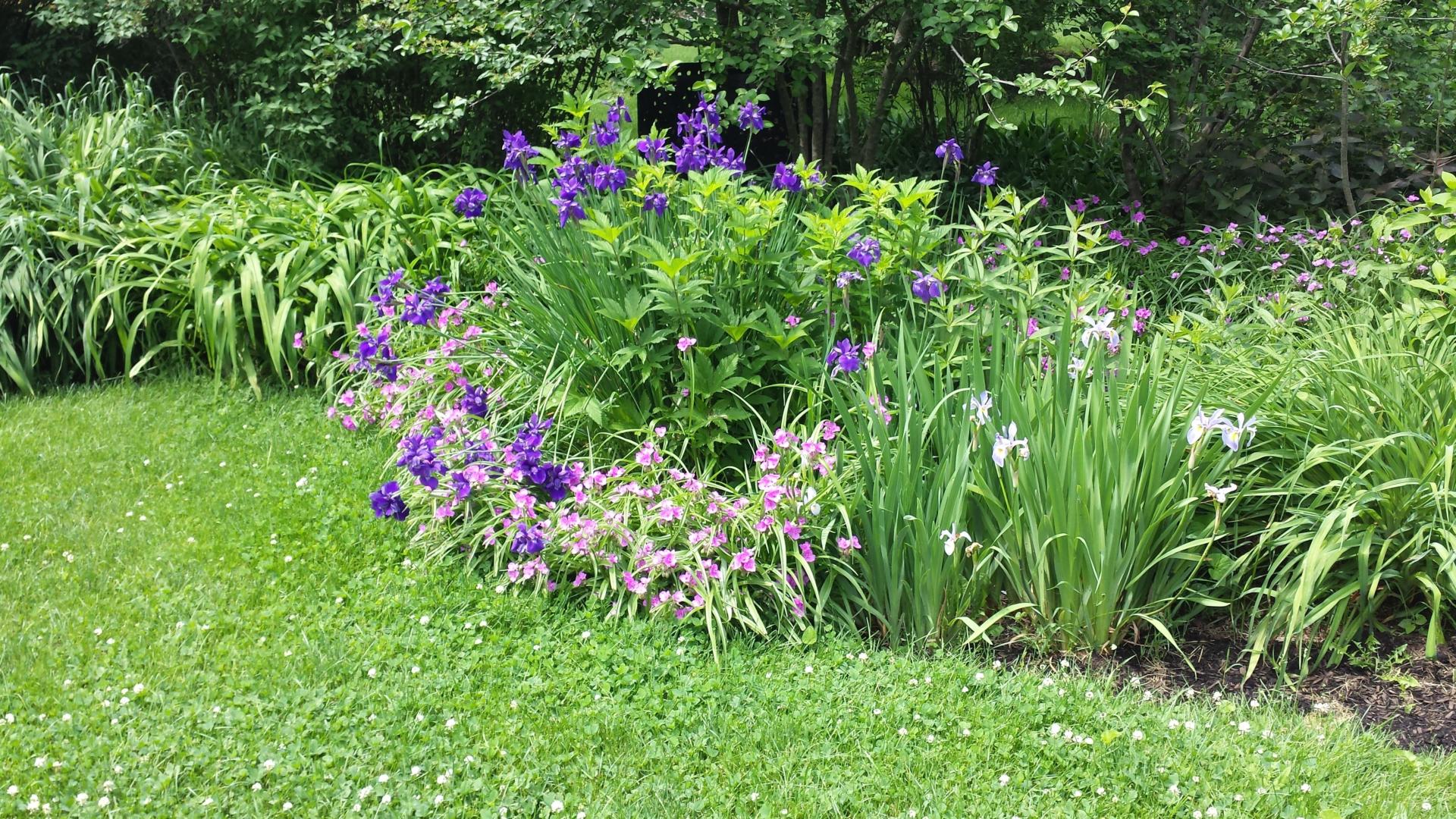
A view of the native plant rain garden in early summer, including Iris, Tradescantia, and Carex varieties. Veronicastinum and Filipendula (center) are not yet in bloom.
Ironically, this garden planted to be midsummer-heat resistant also includes a rain garden at one end. This fact will make perfect sense to anyone who does native plant gardening in the Midwest. It just so happens that excess water collects from north and west of the yard into the back corner of the easement, and so I created a rain garden where it can drain away happily. Rain garden plants here must also be tolerant of dry summer weeks, and yet be happy with their feet wet. This rain garden, measuring about 10 feet by 10 feet, includes Filipendula rubra, Iris sibirica, Lobelia siphilitica, veronicastrum virginiana, and several varieties of Carex.
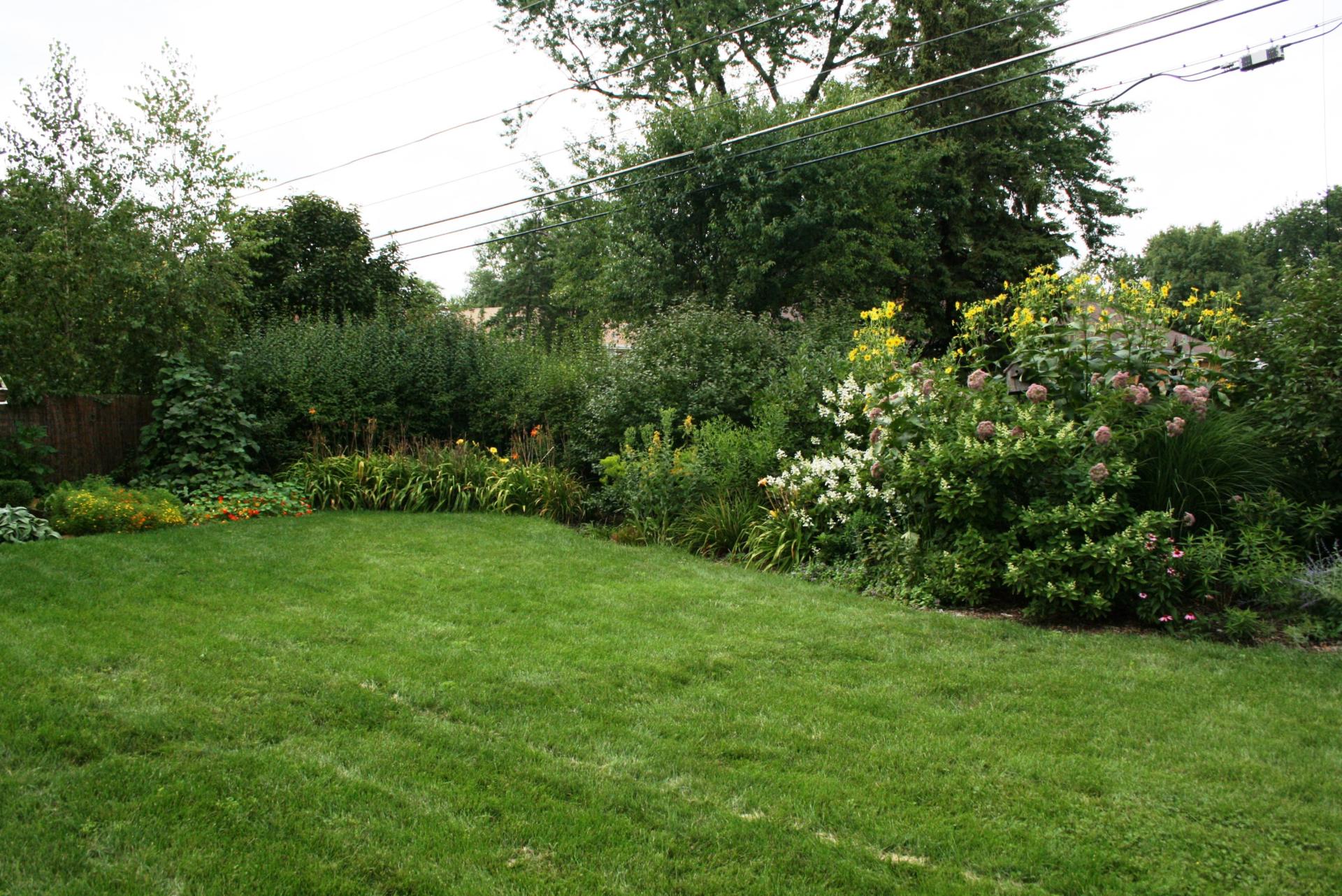
Taller plants toward the right of the photo are mostly savanna or mesic prairie plants, with Hydrangea ‘Tardiva,’ Eupatorium perfoliatum, Silphium perfoliatum in bloom. On the left, the rain garden utilizes mesic prairie and wetland plants, including Viburnum burkwoodii and Aronia melanocarpa. The easement garden ends in the corner where the daylilies are blooming; around the curve are the edible beds.
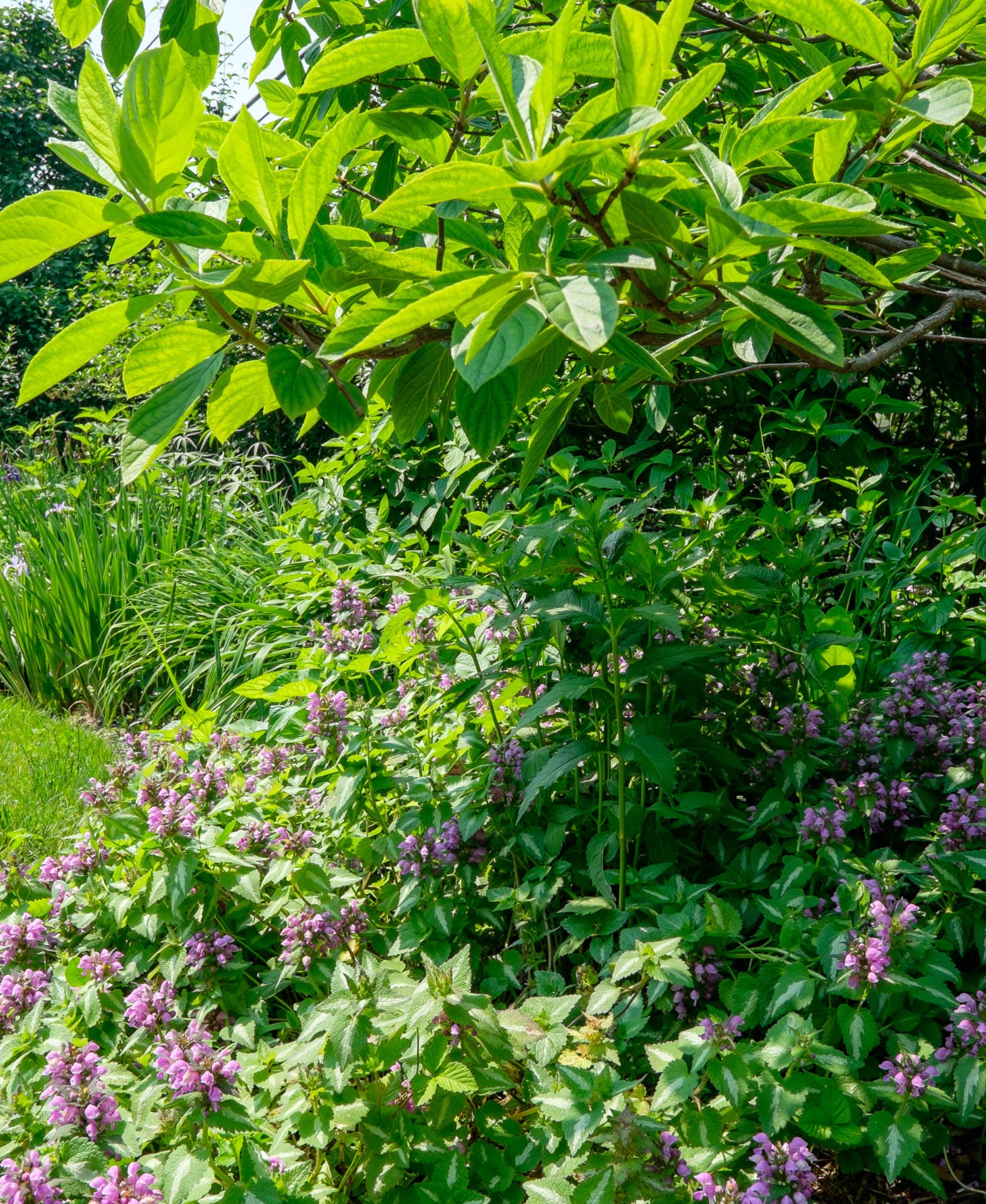
Layering plants make the garden fuller and more attractive. This view shows how the Tardiva hydrangea layers over the groundcover Lamium maculatum, which was planted to keep weeds down on the perimeter when the garden was young. The Lamium has endured and blended with native forbs as the years have passed.
A final design consideration I had in this garden was to make each long side (bordering a property) unique. On my neighbor’s side, Baptista australis, Rudbeckia hirta, and Eupatorium perfoliatum actually mix well with her daylilies, the chokeberry and dogwood shrubs and even a couple peonies that she had placed there years ago. On my side, the Silphium dominates, but is balanced by the hydrangea and viburnum. I am looking forward to the emergence of new additions including Liatris pycnostachya and another tall prairie plant, Silphium terebinthinaceum. I delight in using these natives that are so often too big and bold for residential spaces, and I believe they are the secret of the success of this space.

This view shows my side of the easement, featuring Rudbeckia hirta, Baptista australis, Miscanthus varieties and both Eupatorium perfoliatum and Silphium perfoliatum.
That brings me to a final comment about this and other gardens that are fundamentally native. From a design perspective, the typical orderliness of residential gardens must be taken into account when using native forbs. This takes great care, knowledge about native plants and respect for how they behave. Go too far toward orderliness and the natives lose their own special charm. They are spaced too far apart to stand up well and many of them just aren’t showy enough to look right on their own. But try too hard to mimic nature in residential space and the garden looks “too messy” to fit in. The secret of a successful garden of this type is in letting native plants shine within a larger framework. In the Midwest we can do this and at the same time create a successful drought-tolerant garden.
About the Author
Carol Becker is a writer and landscape designer. She is the owner of Sage Advice Landscape Design and Consulting. For 15 years the company has specialized in native plant and wildlife gardens in the northwest suburbs of Chicago. Becker is a certified wildlife designer with the National Wildlife Federation and she is certified as a teacher with Landscape for Life ™ , a program of the Lady Bird Johnson Wildlife Center and the United States Botanical Garden designed to promote and teach sustainable landscaping to homeowners.
***
Each author appearing herein retains original copyright. Right to reproduce or disseminate all material herein, including to Columbia University Library’s CAUSEWAY Project, is otherwise reserved by ELA. Please contact ELA for permission to reprint.
Mention of products is not intended to constitute endorsement. Opinions expressed in this newsletter article do not necessarily represent those of ELA’s directors, staff, or members.

